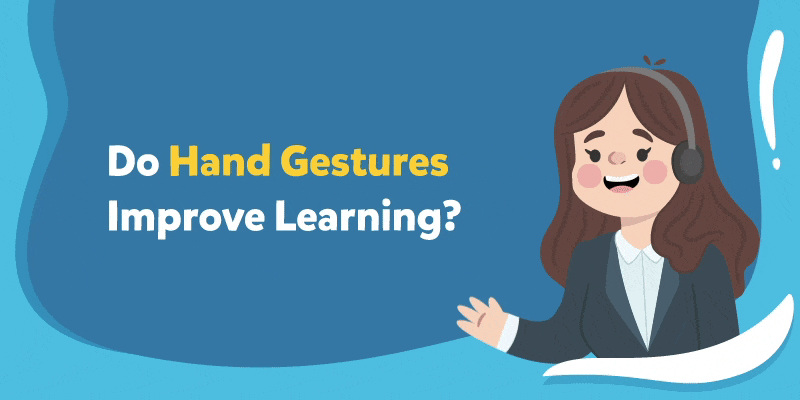
Have you ever noticed that most of us, when we talk, have a natural tendency to explain things with various gestures, especially with our hands? Sometimes we might point with a finger, open our palms or make various other gestures in the air to emphasise a point. Why do you think we or human beings, in general, tend to do this? Is it just something we subconsciously do or could it be that it actually helps in better understanding and communication? Let’s take a look.
A recent study by language educators, published in the Journal of Neuroscience, found that incorporating gestures or other types of movements in vocabulary lessons improves learning outcomes extensively. The study, conducted by researchers at Germany’s Dresden University of Technology, explored the various ways in which stimulating the brain’s motor cortex impacts the learning of new vocabulary. “Many often-used teaching methods for learning new foreign language vocabulary rely on only audio or visual information, such as studying written word lists,” said Brian Mathias, the primary author of the study. “Our findings shed light on why learning techniques that integrate the body’s motor system typically outperform these other learning strategies,” he added.
This study tells us that the “adult brain uses motor areas to remember foreign-language words. However, it is not only the motor component itself that promotes learning. The intrinsic meaning of the gesture also figures in”, as another team led by Mathias’s colleague Manuela Macedonia observed a few years ago. The older study suggested that gestures particularly promote the memory of words if they represent the meaning of the word pictorially.
Not just this single recent study, but a growing field of psychological research has also been exploring the role of gestures in communication, their impact on learning and more. Several studies have already provided evidence that people remember things better when they make spontaneous gestures, watch a teacher’s movements or use their hands and arms to imitate their instructors during the learning process.
One such study involved people who were asked to swing their arms or to stretch them — both groups were told the motion was meant to get the blood flowing. The researchers then found that those who actually swung their arms were more likely to solve a puzzle that required a specific kind of insight. The participants were given two strings hanging from the ceiling that they had to connect. These strings were too far apart to reach at the same time and thus they needed to attach a weight to one of them to turn it into something that is similar to a pendulum. Here’s where the gestures of swinging arms or stretching them worked: only three participants suspected a relationship between swinging or stretching their arms which helped them to solve the above-mentioned task. The study also suggested that apparently, this type of instructed movement helps thought even without any conscious connection to what a person is doing.
Another research conducted by a University of Rochester scientist before 2010, also suggested that it is possible to help children learn difficult concepts by providing gestures as an additional method of taking in and retaining information.
“We’ve known for a while that we use gestures to add information to a conversation even when we’re not entirely clear how that information relates to what we’re saying,” Susan Wagner Cook, lead author of the study and postdoctoral fellow at the University of Rochester, had written in a journal. “We asked if the reverse could be true; if actively employing gestures when learning helps retain new information.”
Cook was surprised to see the results. In her study, 90 percent of students who had learned algebraic concepts using gestures could recall and remember them three weeks later. While only 33 percent of speech-only students, who had learned the concepts during instruction later retained the lesson.
While gestures seem to have a clear benefit in the learning process, more research is still being conducted to find substantial ways to deploy the method in order to help children and adults equally.
Do you feel that you remember things better when they are explained with hand gestures? Tell us in the comments below.
Enjoyed reading this? Then check out the Learning Tree blog for more such cool content.
Why Do We Sneeze? Surprising and Weird Things That Make You Go Achoo!
Writing has always been Shreesha’s passion, be it for imparting knowledge or expressing opinions. In her former role as a journalist, she contributed to enriching society with knowledge. Now, at BYJU’S, she has moved on to something more exciting – creating tailor-made content for students. When she is not writing, you would find her looking for new ways to engage her child.